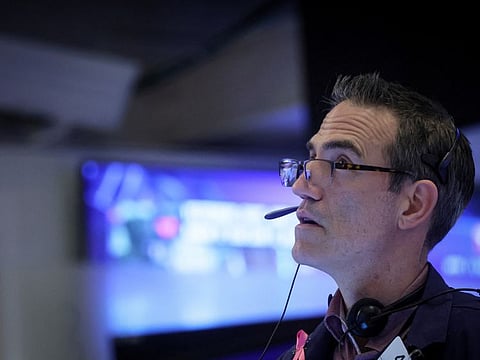US stocks add to weekly gains as sentiment calms
The S&P 500 and the Nasdaq 100 rose more than 1 per cent

New York: US stocks continued to advance in afternoon trading, adding to weekly gains for major indexes on speculation that the Federal Reserve won’t raise interest rates beyond peak levels already priced in by markets.
The S&P 500 and the Nasdaq 100 rose more than 1 per cent, pushing higher even after data earlier in the session highlighted resilience in the service sector. Sentiment remained upbeat as some investors deduced that data have come in strong because the impact of the Fed’s hikes on the economy tends to be delayed.
The selloff in bonds paused on Friday and Treasuries rallied, with the 10-year yield hovering around 3.97 per cent. A dollar index fell and is poised to snap four consecutive weeks of gains.
Fed policy
A jobs report this week showed continued labor-market resilience in the US, supporting the case for the Fed to keep its tightening policy, a theme that had pushed almost every major asset into the red in February. But sentiment improved after Atlanta Fed’s Raphael Bostic said on Thursday that the central bank could possibly pause its rate hikes sometime this summer. Investors interpreted his comments as dovish, even though Bostic and his colleagues said they’d continue to be data dependent and a Fed report on Friday emphasized that further rate increases are in store.
Traders are still optimistic because even the most hawkish Fed officials haven’t suggested that rates could need to go beyond levels already baked in, said Priya Misra, global head of rates strategy at TD Securities. Swap markets have been pricing a peak Fed policy rate of 5.5 per cent in September.
“I think they stay at 5.5 per cent and we have to see how data evolves in the second quarter,” she said on Bloomberg Television.
Misra also added that robust data doesn’t mean the Fed’s persistent tightening isn’t working.
“It takes a long time,” she said. “Policy only turned restrictive last year.”
Sign up for the Daily Briefing
Get the latest news and updates straight to your inbox



